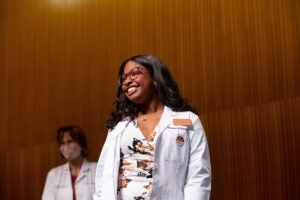In recognition of past contributions to and future promise in the field of functional genomics and bioinformatics, Professor Edward Marcotte will receive a 2008 Edith and Peter O’Donnell Award from The Academy of Medicine, Engineering and Science of Texas (TAMEST). The award honors outstanding young Texas researchers in medicine, engineering, science and technology innovation. TAMEST will present the awards during its annual conference Jan. 10 and 11 at the Hilton Post Oak Hotel in Houston. Marcotte is the William and Gwyn Shive Endowed Professor and Mr. and Mrs. Corbin J. Robertson Sr. Regents Fellow in Molecular Biology in the Department of Chemistry and Biochemistry. He is a member of the Institute for Cellular and Molecular Biology and is co-director of the Center for Systems and Synthetic Biology. Marcotte’s research concerns the mapping of protein interaction networks in diverse organisms, ranging from yeast to worms to human beings. Marcotte holds four U.S. patents and was the first to map a genome-wide network for a complex organism (yeast). He has invented gene-based methods for identifying protein interactions, created the spotted cell microarray for measuring protein expression and founded the first open-access database for mass spectrometry proteomics data. Under his supervision, a group of undergraduate and graduate students invented “bacterial photography” by developing spatial control over gene expression in E. coli bacteria.
Jan 10, 2008
Prof recognized for contributions to field
In recognition of past contributions to and future promise in the field of functional genomics and bioinformatics, Professor Edward Marcotte will receive a 2008 Edith and Peter O’Donnell Award from The Academy of Medicine, Engineering and Science of Texas (TAMEST).



